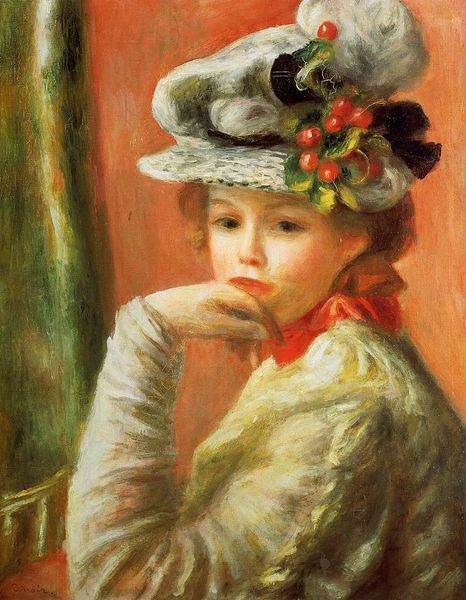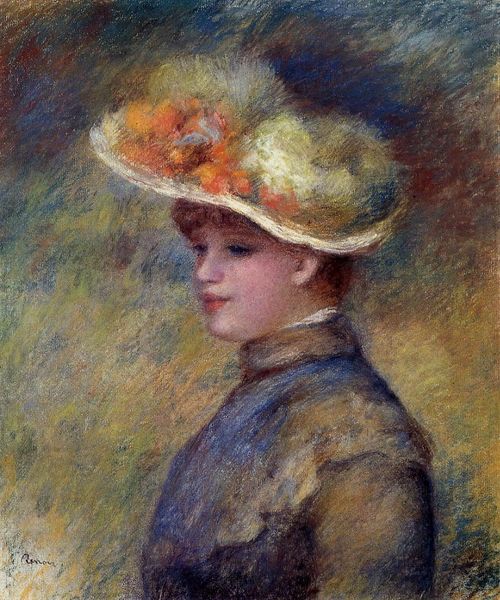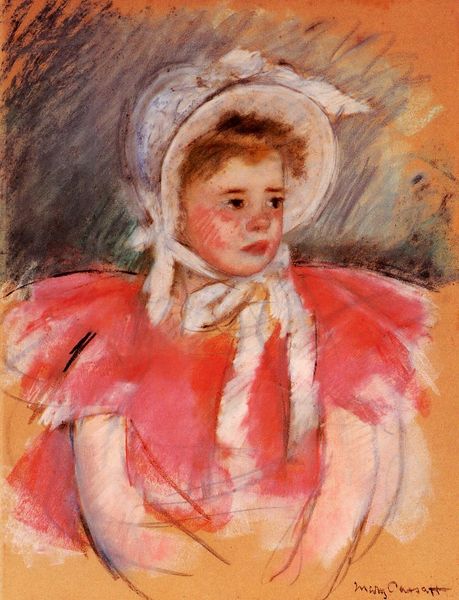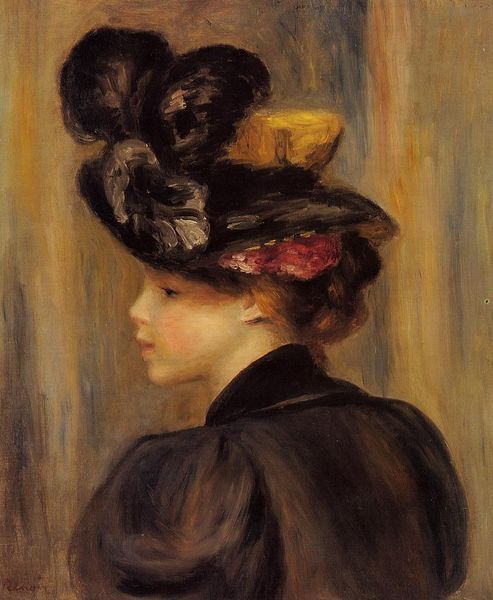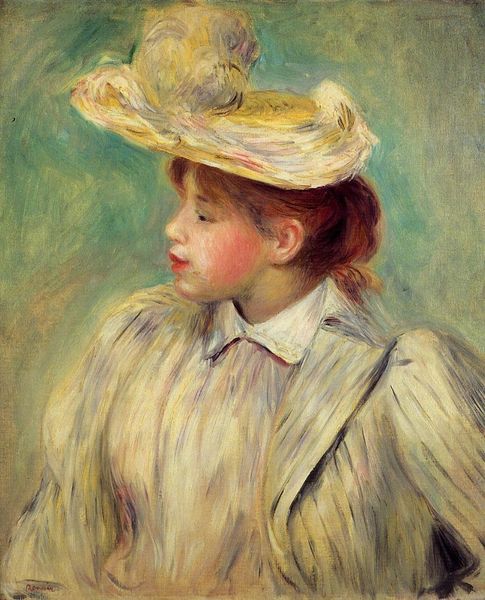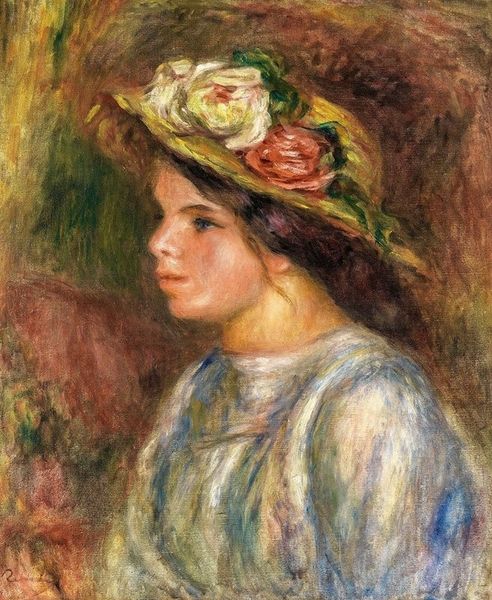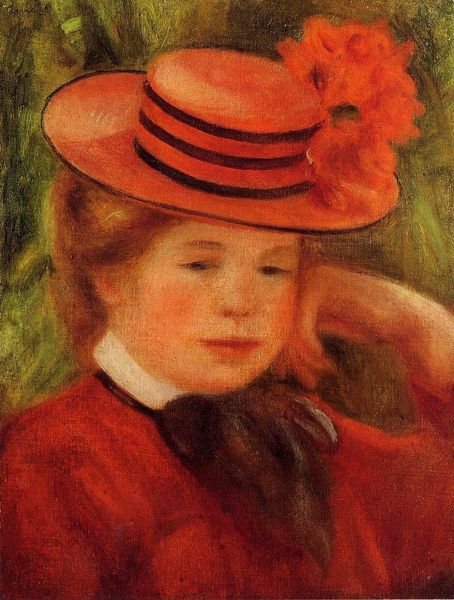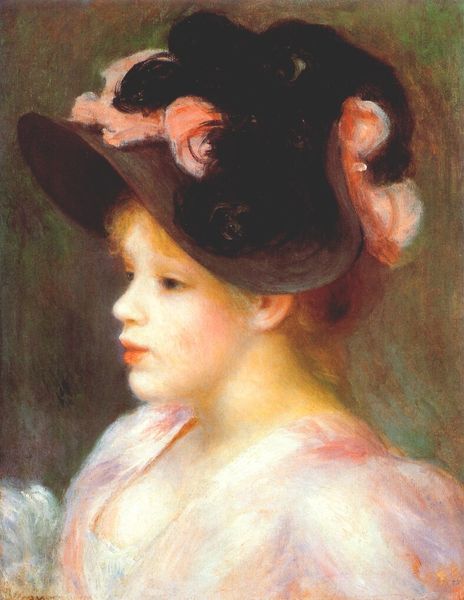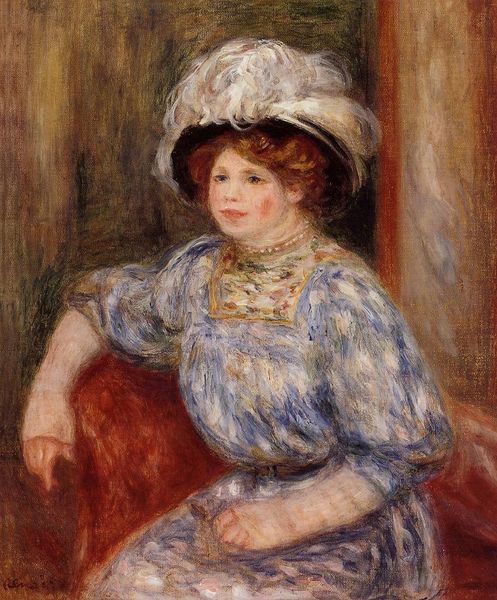
oil-paint
#
portrait
#
impressionism
#
oil-paint
#
oil painting
Copyright: Public domain
Pierre-Auguste Renoir made this pastel drawing, ‘Bust of a Woman (Yellow Dress)’, sometime in the late nineteenth century. Pastel is an interesting choice, because it’s midway between drawing and painting. The sticks of pigment allowed Renoir to work directly, without the fuss of mixing paint. The drawing has a hazy, dreamlike quality. Look closely and you’ll see the marks of the pastel, giving the surface a soft, velvety texture. Pastel lends itself to capturing fleeting moments, like the changing light on the woman’s face or the folds of her dress. Renoir was interested in capturing the effects of light and color, and pastel allowed him to do this quickly and spontaneously. It’s easy to see why pastel became so popular in the late 1800s, as a medium for capturing modern life. While some considered pastel to be a ‘lesser’ medium than oil paint, Renoir and other Impressionist artists embraced its immediacy and portability. It allowed them to break down barriers between the fine arts and more casual modes of creative practice.
Comments
No comments
Be the first to comment and join the conversation on the ultimate creative platform.
